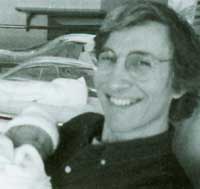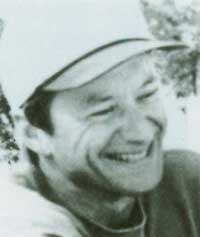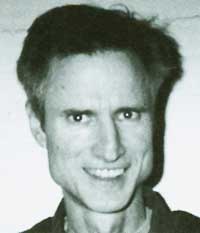 Rob Schultheis, a journalist, painter, and adventurer, covers the destruction of the Buddhas of Bamiyan. He lives in the mountain town of Telluride, Colorado, with his wife-an artist and tour guide whom he married at a monastery at the base of Mt. Everest in a “casual ceremony.” His newest book is Fool’s Gold: Lives, Loves and Misadventures in Four Corners County (Lyons Press).
Rob Schultheis, a journalist, painter, and adventurer, covers the destruction of the Buddhas of Bamiyan. He lives in the mountain town of Telluride, Colorado, with his wife-an artist and tour guide whom he married at a monastery at the base of Mt. Everest in a “casual ceremony.” His newest book is Fool’s Gold: Lives, Loves and Misadventures in Four Corners County (Lyons Press).
 David Patt, who contemplates the commodification of Buddhism in the marketplace, writes: “My second daughter, Sophia Tenzin, was born while I was writing this piece. As I held her I was thinking there are transcendent human experiences that the Market simply can’t touch. Then I picked up the brochure from the ‘cord bank’: for $1,500 they will store placental blood in case your child ever needs a stem cell transplant. I realized then that from cradle to grave there is nothing our culture will not package for sale.”
David Patt, who contemplates the commodification of Buddhism in the marketplace, writes: “My second daughter, Sophia Tenzin, was born while I was writing this piece. As I held her I was thinking there are transcendent human experiences that the Market simply can’t touch. Then I picked up the brochure from the ‘cord bank’: for $1,500 they will store placental blood in case your child ever needs a stem cell transplant. I realized then that from cradle to grave there is nothing our culture will not package for sale.”
 Diana Winston, writes about her experience as a Buddhist nun in Burma, and tells us, “Most of the year in the monastery I spent in meditation, sitting and walking, usually up to fourteen hours a day. It’s an interesting challenge to write about a silent year where nothing actually happened (externally, anyway).” Life after nunhood? “I miss the robes sometimes; today the dharma stays foremost but the form has drastically changed.” Winston is the founder of the Buddhist Alliance for Social Engagement (BASE), the nation’s first socially-engaged Buddhist training program.
Diana Winston, writes about her experience as a Buddhist nun in Burma, and tells us, “Most of the year in the monastery I spent in meditation, sitting and walking, usually up to fourteen hours a day. It’s an interesting challenge to write about a silent year where nothing actually happened (externally, anyway).” Life after nunhood? “I miss the robes sometimes; today the dharma stays foremost but the form has drastically changed.” Winston is the founder of the Buddhist Alliance for Social Engagement (BASE), the nation’s first socially-engaged Buddhist training program.
 Rick Bass, regarding his first essay for Tricycle, “Bonfire,” tells us, “I seek in every available way, in every path opening, to discuss the Yaak Valley on both a speCific and abstract level-the specificity of those fourteen tiny gardens, and the abstract question of the right those places have to exist wild in the world. And I ask for readers’ help-in this paragraph and in the essay-to help protect the woods, particularly those last roadless wildlands of our national forests.”
Rick Bass, regarding his first essay for Tricycle, “Bonfire,” tells us, “I seek in every available way, in every path opening, to discuss the Yaak Valley on both a speCific and abstract level-the specificity of those fourteen tiny gardens, and the abstract question of the right those places have to exist wild in the world. And I ask for readers’ help-in this paragraph and in the essay-to help protect the woods, particularly those last roadless wildlands of our national forests.”
 Kidder Smith, a professor of Chinese history at Bowdoin College, writes about his stint in Chogyam Trungpa Rinpoche’s unarmed Buddhist military, the Vajra Guard, and says, “I wrote about the Buddhist military because I loved the practice and hoped that other people might also come to enjoy the large view it embodies.”
Kidder Smith, a professor of Chinese history at Bowdoin College, writes about his stint in Chogyam Trungpa Rinpoche’s unarmed Buddhist military, the Vajra Guard, and says, “I wrote about the Buddhist military because I loved the practice and hoped that other people might also come to enjoy the large view it embodies.”
Thank you for subscribing to Tricycle! As a nonprofit, we depend on readers like you to keep Buddhist teachings and practices widely available.